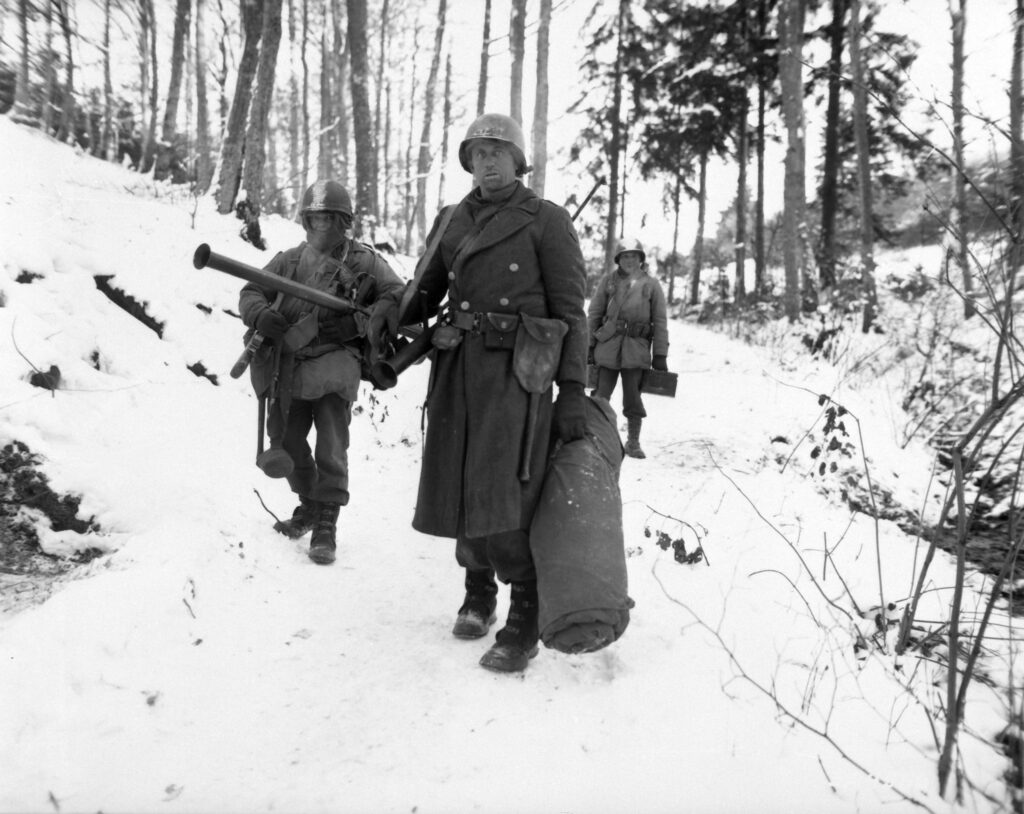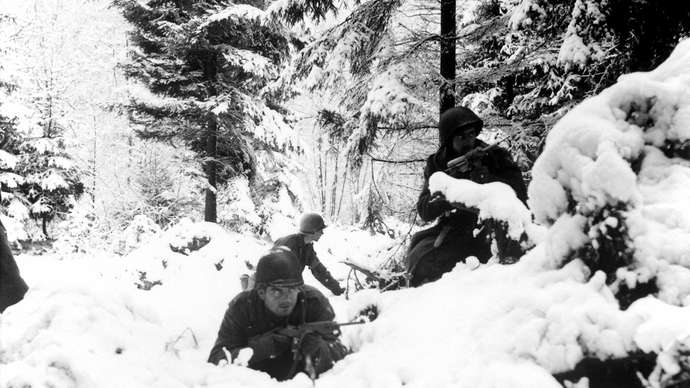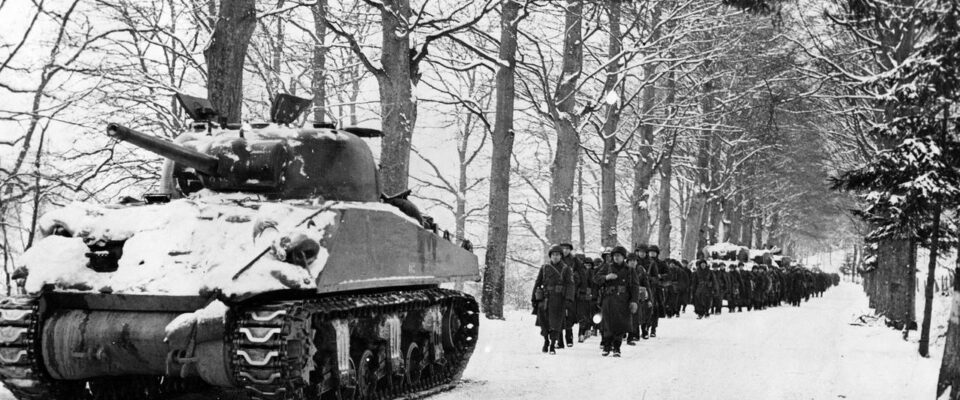Proclaimed the “greatest American battle of the war” by Winston Churchill, the Battle of the Bulge, also known as the Ardennes Counteroffensive, was Hitler’s last major offensive campaign on the Western Front during World War II. Hitler’s intention was to halt Allied use of the Belgian port of Antwerp and to to split the Allied lines in their drive towards Germany. The failure of the German forces to divide the Allies during the Battle of the Bulge paved the way to an Allied victory.
Lasting from December 16th, 1944, until January 25th, 1945, the offensive occurred during extremely harsh weather conditions, with around 30 German divisions attacking American troops who were fatigued after weeks of continuous battle, across 85 miles of the dense Ardennes Forest.
As German forces advanced into the Ardennes, the Allied line formed in such a way that resembled a large bulge, hence the battle’s name. The offensive turned out to be the costliest ever fought by the U.S. Army, which suffered more than 100,000 casualties. The previously serene Ardennes Forest turned into a bloody battle zone as the American troops fought against the German advance at St Vith, Elsenborn Ridge, Houffalize followed by Bastogne, which was defended by the 101st Airborne Division.

Troops Suffered the Extreme Cold
The mid-December timing of the assault was strategic as icy rain, freezing temperatures, thick fog and deep snow brutalized the U.S. troops who were not used to these extreme conditions. More than 15,000 troops suffered from cold-related injuries such as pneumonia, frost bite and trench foot.
“I was from Buffalo, I thought I knew cold,” baseball Hall of Famer and World War II veteran Warren Spahn said in The Love of Baseball. “But I didn’t really know cold until the Battle of the Bulge.”

U.S. Army photograph
The Germans Attempt to Infiltrate Allied Troops
Another Nazi strategy was to cause confusion and manipulate the Allied troops. They sent in imposters dressed as American soldiers, changed road signs and spread false information.
The Nazis were specifically trained for their mission and learnt to speak excellent English, together with convincing slang which was developed from close association with American prisoners of war in German camps. “Under the rules of the Hague Convention these Germans were classifiable as spies and subject to an immediate court martial by a military tribunal. After brief deliberation American officers found them guilty and ordered the usual penalty for spies: death by firing squad.” LIFE magazine reported in 1945.
To identify and stop infiltrators, American troops would ask suspected Nazis to answer American trivia questions.
Allied Air Forces Strike on Christmas Day
By Christmas day, the harsh weather conditions finally subsided, allowing Allied air forces to launch their attack. The ground froze solid, and tanks and air forces were able to maneuver and assist the Allied troops who had been blocked off.
The American defense was led by Allied Supreme commander Gen. Dwight D. Eisenhower and Lt. Gen. George S. Patton Jr. According to the National Archives’ Bloodiest Battle, Eisenhower gave Patton the Third Army, around 230,000 troops, and ordered him to move into the Ardennes.
101st Airborne Division’s Arrival in Bastogne
Thousands of allied troops had been surrounded by the Germans in the small Belgian town of Bastogne. In response, Eisenhower brought in more units, including the 101st Airborne Division.
“When the Germans sent a message demanding the surrender of the 101st on December 22, they got a one-word response from its commander, Brig. Gen. Anthony McAuliffe: ‘Nuts!’” the Bloodiest Battle reported. “This was interpreted by German officers as a more colorful—and negative—response to their demand. The day after Christmas, units of Patton’s rapidly approaching Third Army finally arrived, broke through the German lines, and rescued the troops.”
The Allies claimed victory on January 25th, 195 and made their way to Berlin. According to the U.S. Department of Defense, more than 1 million troops, including around 500,000 Americans, fought the Germans in the Battle of Bulge. The Allies suffered around 19,000 fatalities, 47,500 wounded and over 23,000 missing in action. The Germans suffered around 100,000 casualties all together.

